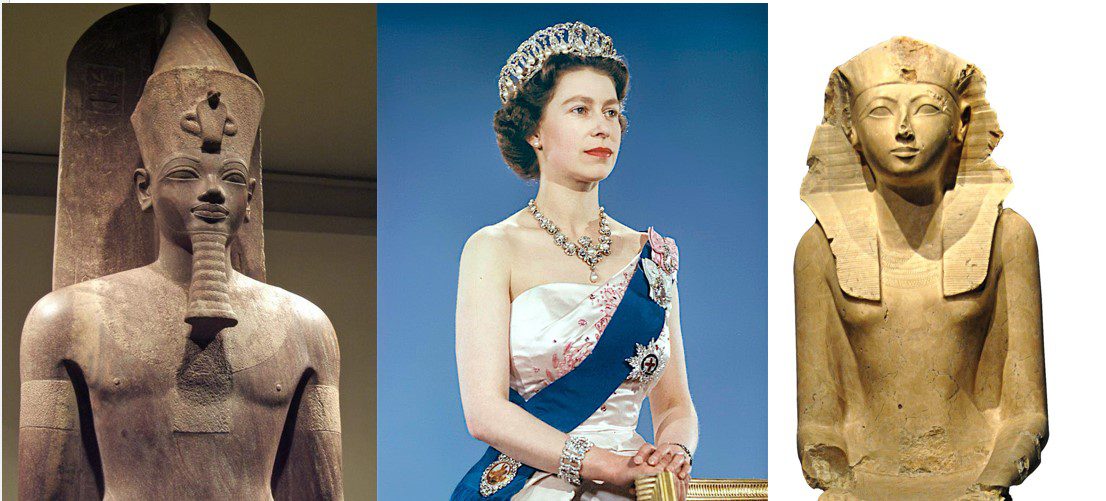This article compares and contrasts the lives and leadership styles of two powerful female leaders: Cleopatra and Queen Elizabeth I. Although they lived in different times and circumstances, both women shattered gender stereotypes and defied expectations to become strong rulers. While Cleopatra is remembered as a symbol of female power, Elizabeth I is known for her strong and decisive leadership during a period of prosperity and growth in England. Both women continue to inspire generations and serve as reminders of the impact that one person can have on the world.
Cleopatra vs. Queen Elizabeth I:
A Comparison of Two Powerful Female Leaders
Throughout history, there have been many powerful female leaders who have defied the expectations of their time, shattered gender stereotypes, and went on to leave an indelible mark on the world. Two such leaders are Cleopatra and Queen Elizabeth I. Although they lived centuries apart, these two women have much in common. In this article, we will compare and contrast Cleopatra and Queen Elizabeth I.
Background and Early Life
Cleopatra was a member of the Ptolemaic dynasty, which ruled Egypt from the death of Alexander the Great in 323 BC until the Roman conquest in 30 BC. She was born in Alexandria in 70/69 BC as the daughter of Pharaoh Ptolemy XII. She grew up in luxury, receiving a first-class education, studying languages and philosophy. Despite her royal background, Cleopatra was not universally accepted by her people, who saw her as a foreigner because of her Greek ancestry.
Queen Elizabeth I was born on September 7, 1533, in Greenwich, England. She was the daughter of King Henry VIII and his second wife, Anne Boleyn. Elizabeth’s early life was a turbulent one; her mother was executed when Elizabeth was just two years old, and she was declared a bastard and disinherited. Despite this, Elizabeth received a good education and was known for her intelligence and wit.
Rise to Power
Cleopatra became the queen of Egypt in 51 BC, after the death of her father. She was just 18 years old at the time, and ruled alongside her younger brother, Ptolemy XIII. However, Cleopatra soon found herself exiled from Alexandria, after Ptolemy’s advisors staged a coup against her. Cleopatra was not one to be defeated easily, and she gathered a loyal army to fight her brother’s forces. In 48 BC, she won a decisive victory against Ptolemy in the Battle of the Nile, and regained her throne. Cleopatra formed an alliance with Julius Caesar and gave birth to his son, Caesarion. After Caesar’s assassination in 44 BC, she aligned herself with his ally, Mark Antony. Their relationship was doomed, and in 30 BC, after Antony’s defeat at the Battle of Actium, Cleopatra committed suicide.
Queen Elizabeth I’s path to power was also fraught with challenges. She was declared illegitimate after her mother’s execution, and was not in the line of succession. However, her half-sister, Queen Mary I, who had become queen in 1553, had no children and her health was poor. In 1558, Mary died, and Elizabeth became queen. Elizabeth proved to be a savvy politician, navigating the religious tensions of her time and establishing herself as a strong ruler. She never married, famously declaring herself married to England.
Their Style of Leadership
Cleopatra was a skilled politician and diplomat, known for her charisma and intelligence. She spoke many languages and was adept at working with powerful men, such as Julius Caesar and Mark Antony. She was known for her generosity, and her ability to inspire loyalty in her followers. However, she was also ruthless when necessary, as demonstrated by her poisoning of her younger brother, Ptolemy XIV.
Queen Elizabeth I was known for her strong and decisive leadership, as well as for her courage and determination. She navigated the complex religious landscape of her time, firmly supporting the Church of England while also allowing for some religious tolerance. She was also famous for her speeches, including the famous “Golden Speech” of 1601, in which she spoke of her love for her country and her people.
Legacy
Cleopatra’s legacy is a complex one. She was reviled by the Romans, who saw her as a seductress and manipulator who destroyed two great men, Julius Caesar and Mark Antony. However, she is still remembered today as a symbol of female power, iconized in literature and Hollywood movies alike, such as the film adaptation of Shakespeare’s Antony and Cleopatra. Cleopatra remains a fascinating figure, and her story continues to captivate people around the world.
Queen Elizabeth I’s legacy, on the other hand, is one of great accomplishment. She presided over a period of stability and prosperity in England, presiding over a “golden age” of culture and innovation. Her reign saw the flowering of works of art, literature, and music, as well as the establishment of England as a major global power. Elizabeth’s influence continues to be felt to this day, with her contributions to history still celebrated around the world.
Conclusion
In many ways, Cleopatra and Queen Elizabeth I were very different, living in different times and under different circumstances. However, they both defied expectations, shattered gender barriers, and went on to become powerful leaders in their own right. While Cleopatra’s accomplishments may have been somewhat overshadowed by her personal life and relationships, Queen Elizabeth I left a lasting legacy that has inspired generations. Both women serve as inspirations to women around the world, demonstrating the power of female leadership and the impact that one person can have on the world.
